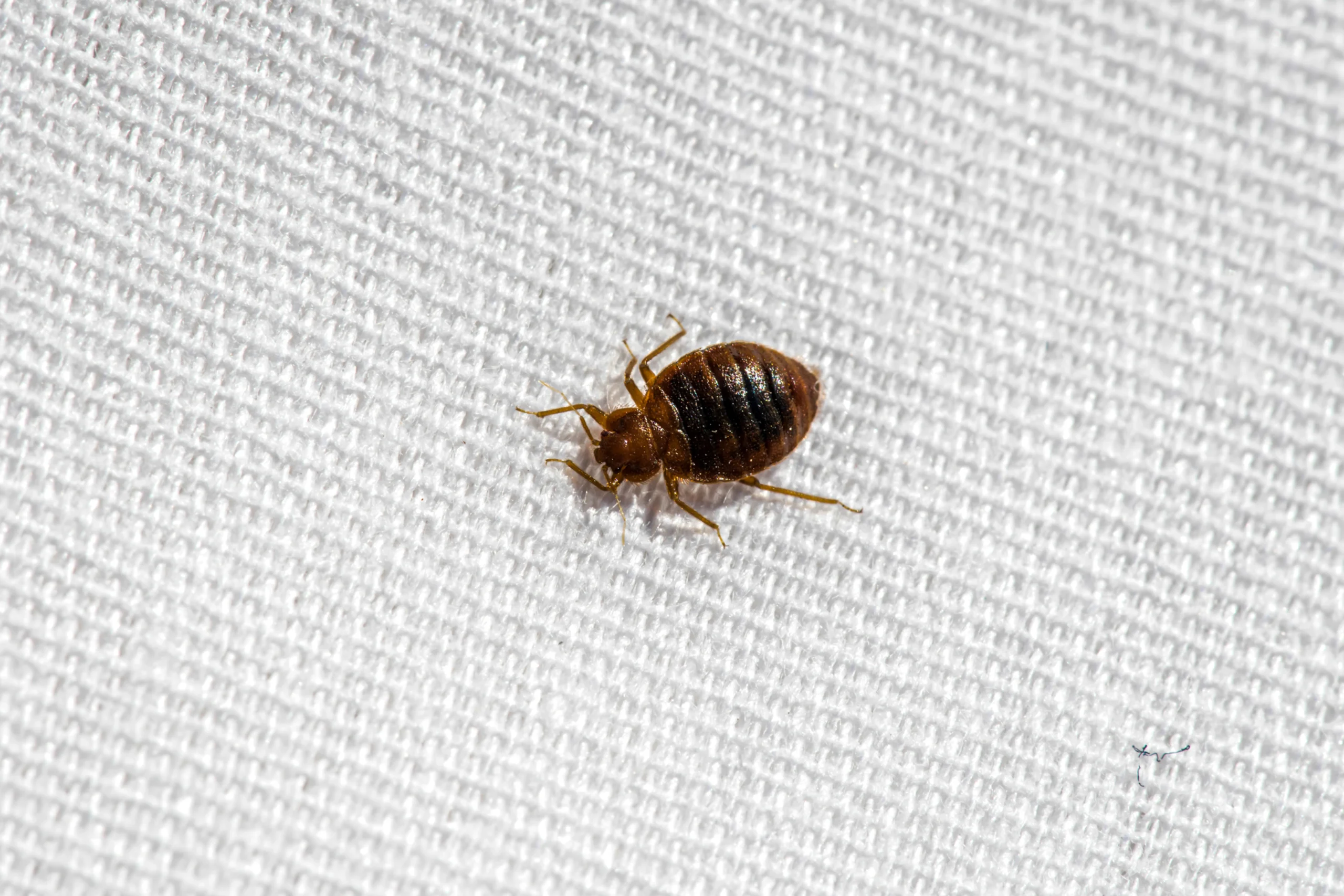Bed bugs are sneaky pests that often go unnoticed until a minor issue becomes a severe infestation. If you’re waking up with unexplained bites or spotting tiny blood stains on your bedding, these might be your first clues.
Catching a bed bug infestation early can save you time, money, and stress. In this guide, we’ll explain the most common early signs, what causes infestations, and the smartest next steps to take plus when to bring in professionals.
What Causes a Bed Bug Infestation?
Contrary to popular belief, bed bugs don’t appear due to poor hygiene. These pests hitchhike into your home through:
- Luggage after traveling.
- Used furniture or mattresses.
- Guests unknowingly carrying them in.
- Shared laundry facilities.
- Multi-unit housing cross-contamination.
Once inside, they hide in cracks, mattress seams, headboards, and even electrical outlets waiting to feed at night.
How Do You Know If You Have a Bed Bug Infestation?
Watch for These Early Bed Bug Infestation Signs:
- Red, Itchy Bites in a Pattern: Bed bug bites often appear in lines or clusters on arms, legs, or back. While not everyone reacts, those who do may see swelling or feel intense itching.
- Tiny Blood Stains on Sheets: These marks are from crushed bugs or bites that bled slightly during sleep. They’re often one of the first visible signs.
- Rusty or Dark Spots (Excrement): Small, dark droppings on mattresses, walls, or furniture crevices are a key sign of bed bug activity.
- Musty Odor in the Room: In more established infestations, a sweet, musty smell similar to wet towels or mold may become noticeable.
- Shed Skins or Eggs: Bed bugs molt five times before reaching maturity. You might find their tiny, pale exoskeletons near mattress edges or under cushions.
Think you’ve spotted signs? Get expert help before it spreads further with our expert bed bug control service.
How Long Does It Take for Bed Bugs to Infest?
A single female bed bug lays up to five eggs per day and hundreds in a lifetime. Within 4–6 weeks, a small problem can become a severe bed bug infestation if not treated.
That’s why early detection and prompt response are so critical.
What to Do If You Suspect Bed Bugs
Step 1: Confirm the Infestation
Inspect mattress seams, baseboards, and upholstered furniture with a flashlight. Look for:
- Live bugs (flat, reddish-brown, apple-seed sized).
- Molt skins and tiny eggs.
- Fecal spots.
Step 2: Take Temporary Action
- Wash bedding in hot water and dry on high heat.
- Vacuum mattress, bed frame, and floors thoroughly.
- Use mattress encasements to trap bugs inside.
- Avoid moving items room to room, this spreads them.
These steps won’t eliminate an infestation, but can help reduce activity while you plan your next move.
DIY vs. Professional Bed Bug Treatment
Can You Get Rid of a Bed Bug Infestation Yourself?
DIY treatments like steam cleaning or sprays may reduce small populations, but most store-bought solutions:
- Don’t reach eggs hidden deep in crevices.
- May be misapplied or unsafe in bedrooms.
- Require multiple treatments with limited results.
Why Professional Treatment Is Recommended
A pest control expert can:
- Inspect thoroughly to identify all hiding spots.
- Use heat or chemical treatments proven to eliminate all life stages.
- Provide follow-up visits to ensure full eradication.
Explore: Bed Bug Infestation Treatments
How to Prevent Future Bed Bug Infestations
Once you’ve dealt with an infestation, prevention becomes key. Here’s how to keep your home bed bug-free:
- Inspect hotel mattresses and headboards before staying.
- Keep luggage elevated and away from beds or couches.
- Wash clothes in hot water immediately after travel.
- Be cautious with secondhand furniture.
- Seal mattress and box springs in protective encasements.
- Reduce clutter to eliminate hiding spots.
FAQs
What does a bed bug bite look like?
Typically red and itchy, bed bug bites often appear in rows or clusters, especially on arms, shoulders, or legs. Not everyone shows symptoms.
Can I treat a bed bug infested mattress?
You can vacuum and encase the mattress, but to fully eliminate the infestation, professional treatment is usually required.
Where do bed bugs hide during the day?
They hide in mattress seams, headboards, baseboards, behind picture frames, and even electrical outlets anywhere dark and tight.
How can I tell if a bed bug infestation is severe?
If you see bugs during the day, find large clusters of eggs, or detect a musty smell, the infestation is likely widespread.
Are bed bugs dangerous?
While they don’t spread disease, bed bugs cause skin irritation, allergic reactions, and mental distress due to disrupted sleep and anxiety.
Recent Posts / View All Posts




